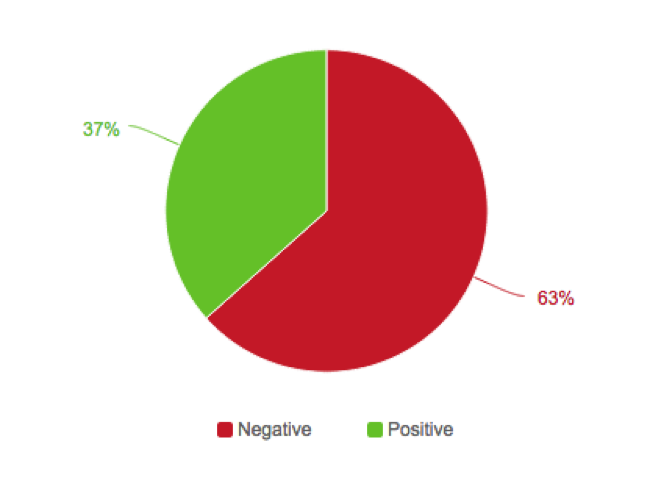10 Social Listening Tools and Who They’re Best for
By BrandwatchJul 14
Join us and boost your social media potential with our data-led event
Published January 4th 2016
One of the things we notice when speaking to our clients and peers is the sheer variety of ways that social data is applied within organizations.
At its most simple, social data is being used to support listening and engagement functions and for measurement around brand awareness and share of voice, while at the other end of the spectrum are businesses which have successfully created an analytics culture.
These businesses are able to not only generate insights from social data, but activate them across the whole organization.
Social data has the power to improve any business, but it has to begin somewhere.
Before you start waving the flag for social data in your organization, you need to have an idea of where to you want to point the insights.
Who, and how, are you going to be able to help?
Often social data begins and ends in the marketing department. In some instances you might even need to get buy-in there first, and prove to your marketing peers and CMO that social data is not just focused on vanity metrics.

Let’s say you have managed to do just that – the marketing department are already using social data to validate, measure and improve what they are doing. How do you take the next step and spread social into other areas of your business?
We spoke to Social Media Analyst at Microsoft, Ben Donkor, to find out how he has managed to do just that.
Here’s our 10 step guide on how to champion social data in your organization.
Every organization has its own personality.
Knowing what makes your organization tick will help you better position social data as something valuable and indispensable.
Start by mapping out your organizational structure, noting who reports to who, and how each team measures success.

This research will help you figure out where to direct your attention and guide you when navigating complex internal structures.
After researching how your organization is structured, pinpoint the people who are in the right places to make a difference.
Identify the key decision makers and influencers within each department you want to target.
If you are lucky, you may only need to get buy-in from a handful of internal influencers who can act as amplifiers for social data within your organization.
“Never be afraid to widen your reporting.
Make a name for yourself in your team, then department, and eventually in your organisation. Showcase what you can bring to the table, and bring real insights to the table.
Carefully target the distribution lists you use for your reporting, but don’t be afraid to include people high up”
Arrange a time to talk with your stakeholder face-to-face. Keep it informal and use this time to better understand what motivates each stakeholder.
Is your stakeholder motivated by numbers and KPIs, or more responsive to success stories?
Ask them what problems they are facing. Is your PR team struggling to measure the ROI of their efforts? Is your product team lacking customer feedback?
Fostering a two-way dialogue with stakeholders will help you figure out how social data can solve real business problems. It will also help you tailor your approach when it comes to selling social insights back to them.
The language you use when talking about social data will often determine how your stakeholder interprets that information given to them.
Bombarding your stakeholder with jargon that might be familiar to you but alien to them is going to make communication more difficult.

Use language that they can relate to and bring them along the journey at a pace they are comfortable with.
Senior management are guaranteed to care about what your customers think, so repositioning your social data as being a representation of the ‘voice of your customers’ is a good way to get your insights taken seriously.
“Be patient.
You’re probably trying to untangle someone’s misconceptions on social that they’ve had for years; perhaps you’re talking with someone who’s already facing obstacles of their own, and they probably see social as a secondary thought.
It’s important to understand what obstacles they’re facing and propose social data as a solution.”
Often when we talk about the uses for ‘social data’ with prospective customers it’s the simple anecdotes that are most effective.
As an example, an ice cream brand found that people were far more likely to be talking on social media about eating ice cream on days when it was raining, as opposed to days when it was sunny.
By using this insight, the client was able to reshape their marketing to better reflect how their consumers used their products and perceived their brand.

This anecdote goes down well when talking with prospective customers as it’s easy to relate to, challenges conventional wisdom and demonstrates a valuable outcome.
If you are able to do the same for your data, then you’ll find it much easier to get your stakeholders on board.
It’s likely that there will be other people in your organization who have similar ownership over a dataset. These individuals can turn out to be valuable allies.
Looks for opportunities to collaborate with them and find ways to make their lives easier by offering them some rich insights that would normally be out of reach.
For example, a web analyst might be grateful if you can offer consumer behavior insights derived from social that will help improve the customer journey on your website.
Everyone likes being told they are doing a good job.
Using social data to give a colleague a pat on the back will be a good icebreaker. It could be as simple as letting your marketing team know about an influencer engaging with your latest campaign.
Be ready to share successes with the relevant parties.
They will appreciate the acknowledgement and you will gradually get more people hooked on social data – win-win.
Sitting on insights that point out hard truths is never a good idea.
If social data is revealing that a particular set of customers are unhappy then be ready to share it with the relevant team members.

Make your stakeholders understand the importance and urgency of a negative situation.
If you don’t have your own examples, you could relay cautionary tales of other companies who handled a crisis on social media poorly and what the lasting impact was on brand perception.
Social data has the power to do a lot of good within organizations, but in order for it to be taken seriously you are going to need to be able to show the positive impact of your efforts.
Be ready to back up your insights with numbers and facts when talking to senior management.
Importantly, whatever your approach to proving ROI, make you aren’t making promises you can’t keep. Be realistic in what you can set out of achieve.
One of the best ways to get your colleagues tuned into social data is to make it easily accessible and digestible to anyone.
If you are using a social analytics platform, like Brandwatch Analytics, creating tailored reporting dashboards for each team is a good first step.
Start off by making them ‘read-only’, so that way anyone can jump right in without the fear of breaking anything. If that gets traction, offer to run training sessions or workshops on using your platform of choice.
The goal overtime is to get more teams not just looking at reports, but drawing their own conclusions based on their own analysis of the data.
Perhaps the best way to get social noticed is to integrate it into your work environment by visualizing the data on screens for everyone to see.

“Have live social visualizations (like Brandwatch Vizia) in strategic locations where people will be passing by, and watch by as these screens become the new water-coolers where employees gather round to see what’s being said about the brand online, its sentiment, any crises in real-time as well as any positive and influential engagement.”
Of course, every organization is different and there is no single recipe for success. You may find that some tactics work better than others.
We hope that these tips will give you some guidance on how you can you can start using social data to make a positive impact in your organization.
Have you been in a similar position within your organization? We would love to hear about your experiences and successes in the comments.
Offering up analysis and data on everything from the events of the day to the latest consumer trends. Subscribe to keep your finger on the world’s pulse.
Existing customer?Log in to access your existing Falcon products and data via the login menu on the top right of the page.New customer?You'll find the former Falcon products under 'Social Media Management' if you go to 'Our Suite' in the navigation.
Brandwatch acquired Paladin in March 2022. It's now called Influence, which is part of Brandwatch's Social Media Management solution.Want to access your Paladin account?Use the login menu at the top right corner.